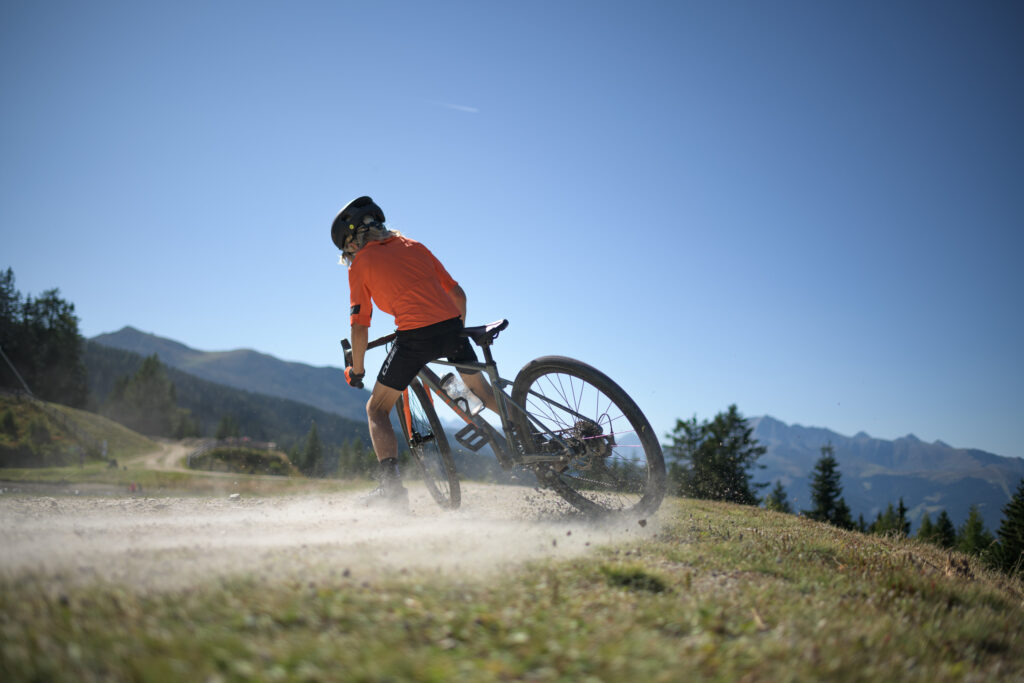
Are you looking for a bike that can handle both city streets and rugged trails? The work week, and the weekend? A gravel bike might be just what you need. These versatile bikes are designed for a variety of terrains, making them perfect if you want adventure and flexibility (who doesn’t?!). Whether you’re commuting to work, exploring countryside paths, or going on long-distance rides, gravel bikes offer a unique blend of performance and comfort that can handle it all.
As an avid gravel rider, I’ve owned my fair share of gravel bikes, spent countless hours in the saddle and can’t resist scratching my itch for 30+ hour rides every once in a while. In this article, I’ll walk you through everything you need to know about gravel bikes. Starting with what gravel biking is, the key features of gravel bikes, how they compare to other types of bikes, and even touch on the growing popularity of electric gravel bikes. Whether you’re a seasoned cyclist or just curious about the world of gravel biking, I’ll share my experience and insights to help you understand why gravel bikes might just be the perfect ride for you.
What is Gravel Biking?
Gravel biking, as the name suggests, consists of casually or competitively riding on dirt trails, sand tracks, gravel roads, and unpaved roads. In its early days, Gravel biking was deemed to sit under the umbrella of road bikes, however, Gravel riding has become a standalone discipline in its own right with gravel-specific models and components continually being developed. Designed with the perfect combination of road cycling and mountain biking features, this crossover with other segments of cycling means gravel bikes offer speed and stability on bumpier terrain.
With an apparent growing need for more versatile bikes, sales of gravel bikes have sky-rocketed by 59% since 2019 in the UK. It could be said that the rise in popularity has something to do with rider’s common complaint of not feeling safe cycling on UK roads, however, there’s so much more to the joys of gravel biking. Gravel bike popularity is vastly down to its diversity. To me a gravel bike is the ultimate blend of straight-line efficiency and off-road capability, allowing you to reach and explore new tracks, trails, and lanes that would have been too much for a traditional road bike or too slow going on a mountain bike. When I rode my first ‘gravel event’ in 2016, the term gravel bike didn’t really exist – you either rode a mountain bike or did your best to squeeze wider tyres into a road bike. In typical Scottish fashion, there were 4 seasons in one day during that event and I remember flying down muddy and wet descents with my friend, as those riders with skinny tyres had to slide their way through Kielder Forest. Fast forward to now, and The Dirty Reiver remains one of the premier gravel events on the UK calendar with over 1500 riders, but the bikes are now very different!
The Main Features of Gravel Bikes
Gravel bikes incorporate specific features that combine elements of both road and mountain bikes to optimise speed and performance on rougher terrains. Some of these features include:
- Durable Frames
- Relaxed Geometry
- Enhanced Frame Clearance
- Wider Tyres
- Versatile Gearing
- Disc Brakes
- Flared Dropbar Handlebars
- Multiple Mounting Points
Gravel Bike Frames
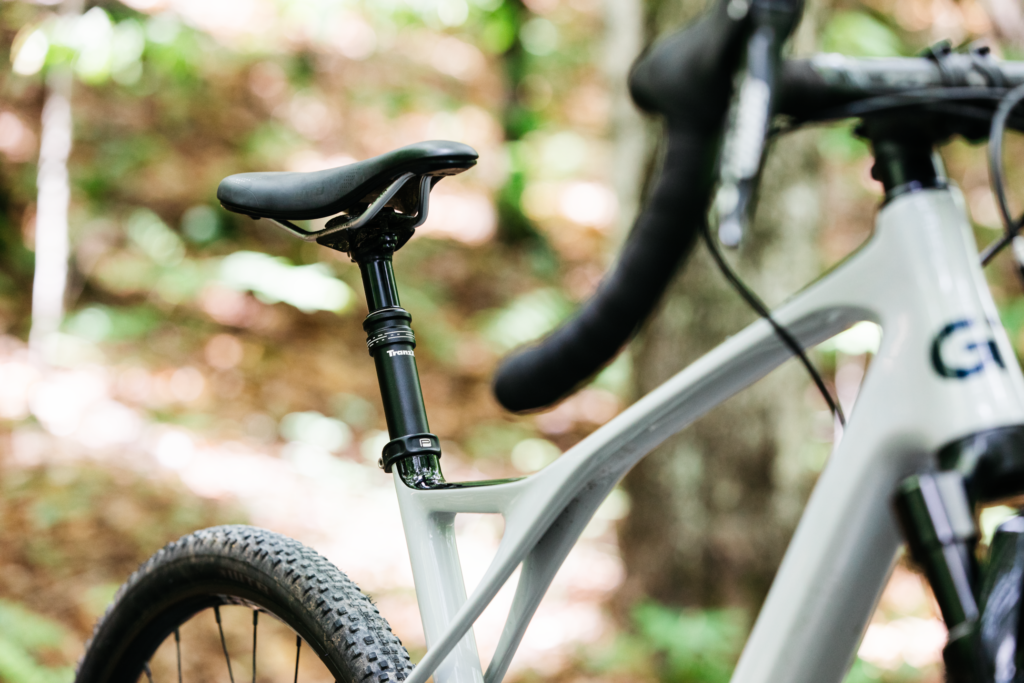
Gravel bike frames are typically constructed from lightweight yet durable materials like aluminium, steel, or carbon fibre. They are designed to provide you comfort over long distances while maintaining stability on uneven surfaces. Features such as a less aggressive head angle and lower bottom bracket create a similar but more relaxed geometry to road bikes.
The more upright riding position of a gravel bike makes it more comfortable for your extended rides. They will also come with wider fork clearance for wider tyres than that of a road bike, meaning it’s not as straightforward as just swapping the tyres on your road bike! Several factors, including your budget, will determine what type of bike frame material is best for you.
Gravel Bike Tyres
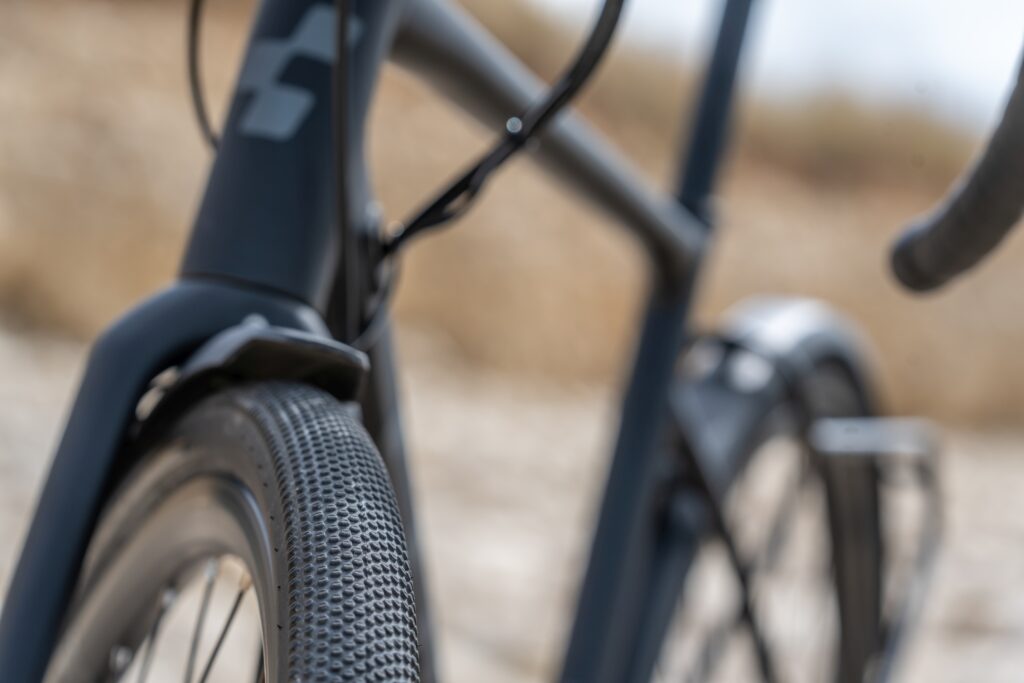
One of the defining features of gravel bikes is their wider tyres, which are closer to those of mountain bikes than road bikes. These range from around 35mm to 45mm in width, offering increased traction and stability on gravel, dirt, and rough roads compared to traditional smooth road bike tyres. They may also feature tread patterns more similar to that of a mountain bike, that provide grip without compromising efficiency on smoother surfaces.
Gravel Bike Gears
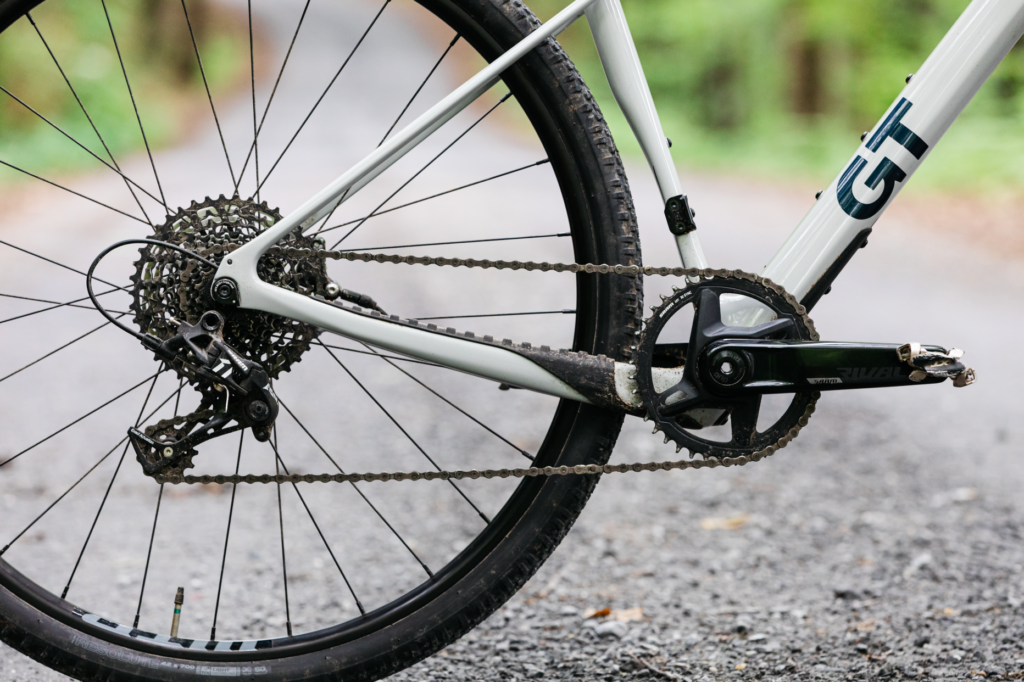
Due to their versatility, Gravel bikes are equipped with gears which hit a sweet spot between high-speed efficiency and low-speed climbing over rough and loose terrain. A lot of gravel bikes are fitted with a 1x groupset, meaning they have a single chainring at the front, and then up to 12 gears on the rear. This eliminates the front derailleur to increase simplicity and improve durability in wet and muddy conditions where a traditional front derailleur could get clogged or damaged. The latest gravel-specific derailleurs, such as Shimano GRX and SRAM XPLR, can work with wide-ranging cassettes, providing the rider with the best of both worlds: top-end speed and climbing ability.
Riders looking to cover big distances across paved surfaces as well as off-road trails may want to opt for a gravel bike which is fitted with a compact double chainset at the front, this increases top-end speed with a larger front chainring so you can cover huge distances with ease.
Gravel Bike Brakes
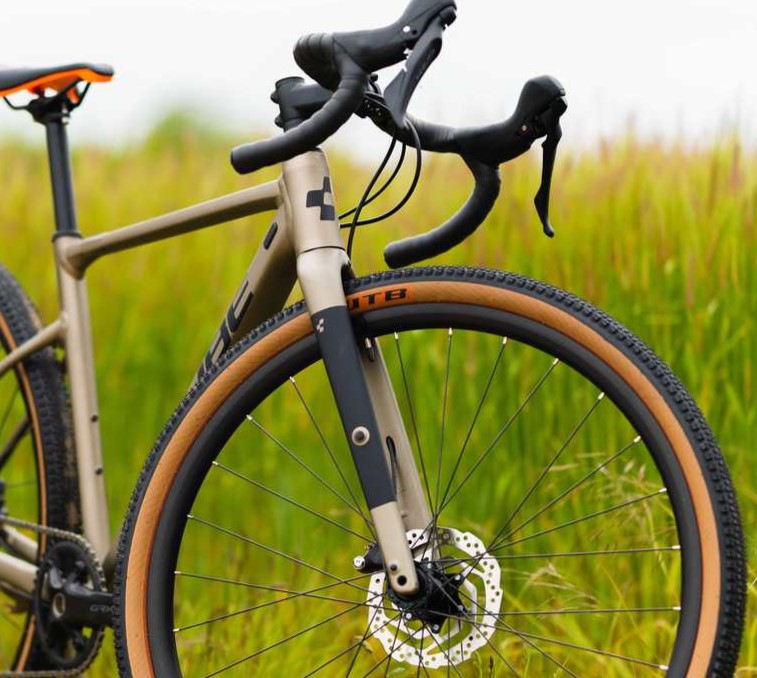
Disc brakes, consisting of a disc rotor fitted directly to the wheel hub, are the general standard on gravel bikes. A gravel bike requires superior stopping power and control when riding in wet, muddy and varied environments. Disc brakes, combined with the bike’s overall design, will give you more confidence on descents and technical sections where precise control is crucial. However, you’ll find that brake pads will wear fast with a gravel bike, naturally down to the more abrasive sand and dirt that will be collected, so good disc brake maintenance is essential.
Gravel Bike Handlebars
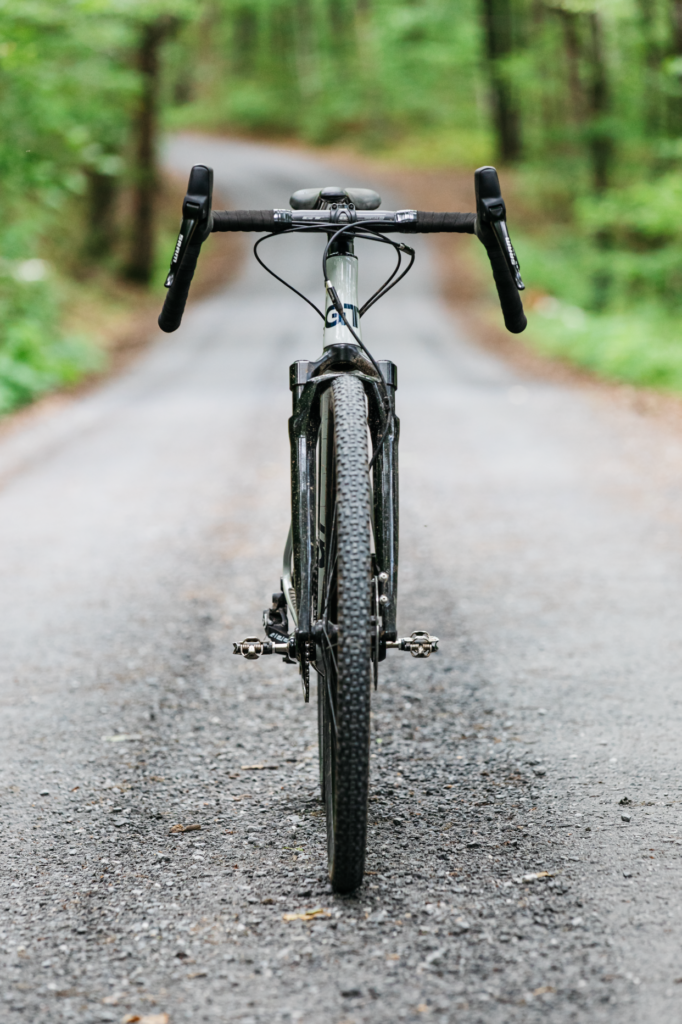
Gravel bikes have flared drop handlebars, similar to road bikes but wider, to improve control and stability on loose surfaces whilst allowing for more aerodynamic positions when speed is a priority. Offering multiple hand positions increases comfort on long rides and better control on rough terrain.
Gravel Bike Bags & Racks
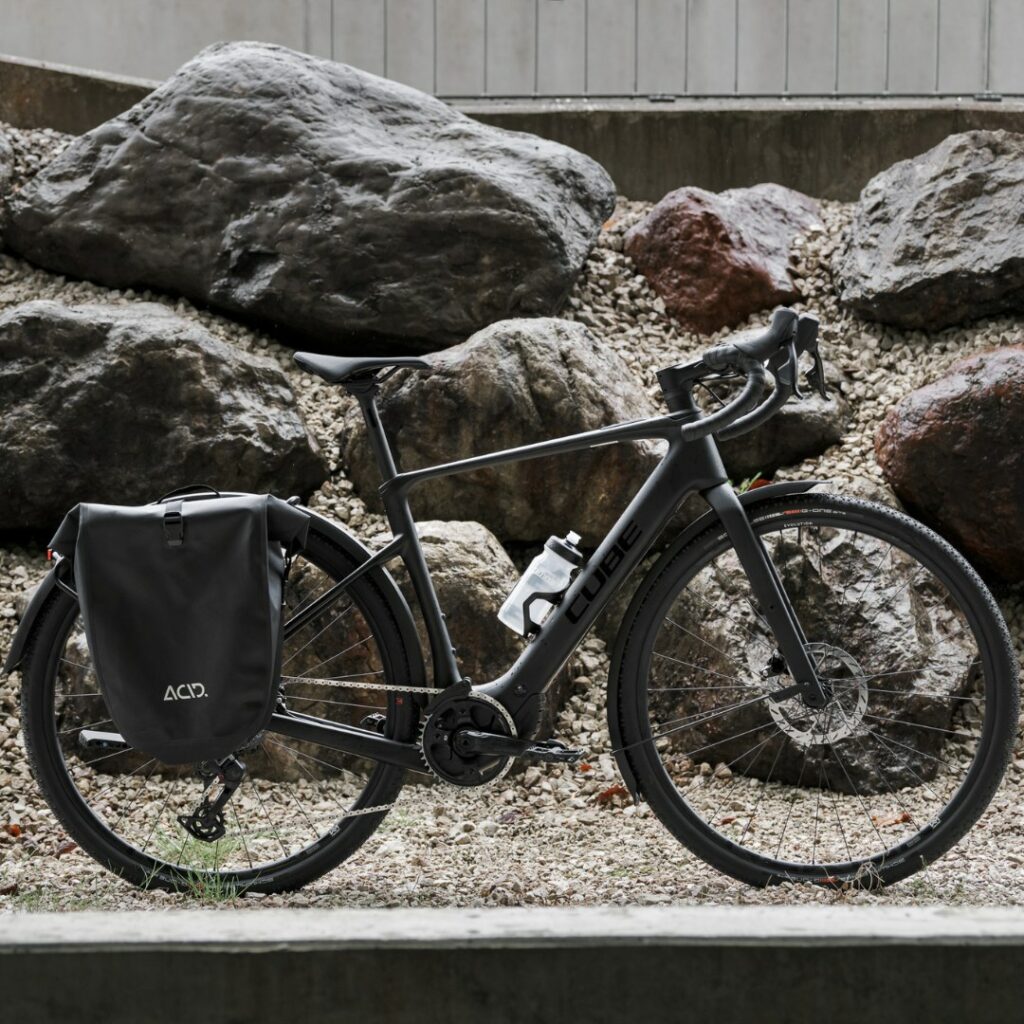
Designed with practicality in mind, many gravel bikes come equipped with mounts for attaching racks, panniers, or bikepacking bags. These mounting points are strategically placed on the frame, fork, and seat stays to ensure stability and load-bearing capacity without compromising the bike’s handling. Gravel bike bags and racks allow you to carry essentials like clothing, tools, or a cheeky cornish pasty comfortably, whether commuting to work, embarking on a multi-day adventure, or longer tours. This versatility makes gravel bikes ideal for riders who value both performance on mixed terrain and the option for additional storage.
Are There Electric Gravel Bikes?
Yes! With the rise of demand for electric bikes (e-bikes), it’s no surprise. Brands have embraced electric-assisted gravel bikes, with electric gravel bike models available from all major brands. Electric gravel bikes combine the versatility of gravel bikes with the added power and ease of electric motors. They are ideal for you if you want to explore longer distances, conquer challenging terrain with a boost, or want added support for climbs.
How Do Gravel Bikes Differ from Other Types of Bikes?
Gravel bikes sit right in the sweet spot between road, mountain, and hybrid bikes. They combine the speed and smoothness of road bikes with the toughness of mountain bikes, plus the comfort and versatility of hybrids. If you’re looking for one bike that can handle anything from tame to rugged terrains or you’re taking on a car-free adventure in the UK, a gravel bike is a great choice, offering distinct advantages over other types of bikes:
Gravel Bikes vs Road Bikes

- More versatility: Gravel bikes are designed to handle a wider range of surfaces compared to road bikes through features such as their frame geometry and tyre width and tread, making them suitable for both paved and unpaved roads.
- Added comfort: Often featuring a more relaxed head angle amongst other geometry features and wider tyres, Gravel bikes provide a smoother ride on rough terrain than a road bike will.
- Increased stability: Gravel bikes offer better stability and control on gravel and dirt roads, thanks to features such as wider handlebars and wider, knobbly tyres – ensuring you stay planted and enhancing confidence and safety during off-road escapades!
Gravel Bikes vs Mountain Bikes
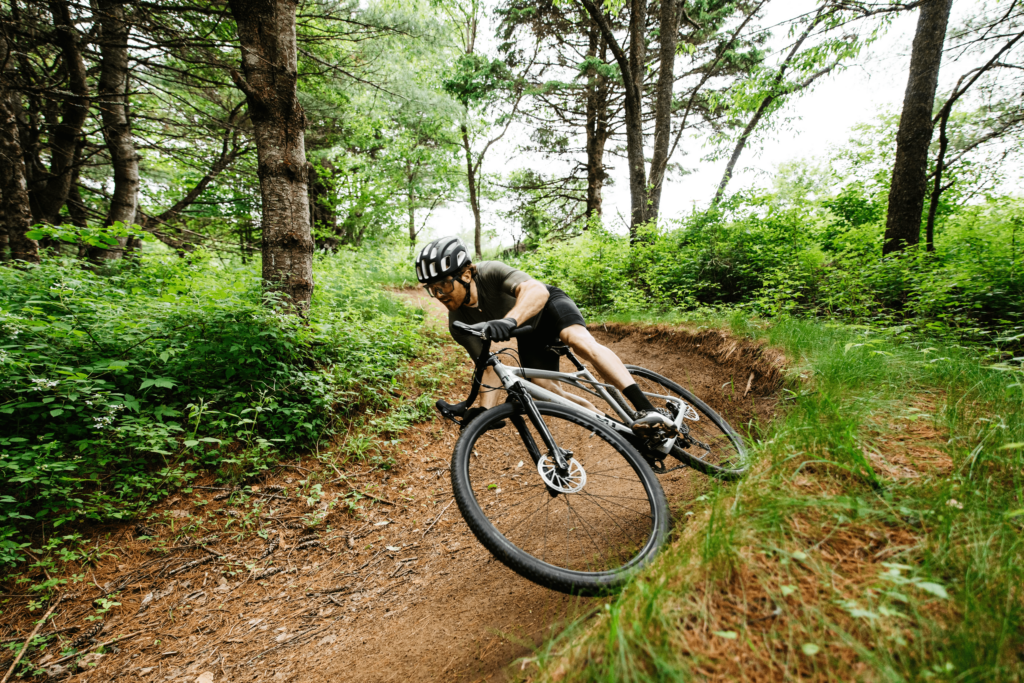
- Added speed: Gravel bikes are generally faster on smoother surfaces compared to mountain bikes, thanks to their aerodynamic positioning, lighter weight and more efficient rolling resistance. This helps if you’re riding between flat straights to dirt paths and light trails.
- Terrain transitions: While mountain bikes excel in technical off-road trails, gravel bikes offer better performance on varied surfaces including gravel, dirt roads, and paved paths. And variety, after all, is the spice of life! However, if it’s more thrilling ups, downs and jumps that you’re after you may want to consider choosing a mountain bike.
- Ride efficiency: Gravel bikes are better suited for long, non-technical rides and endurance cycling as they are generally lighter, with stable but slimmer tyres to roll efficiently on asphalt. This makes them more suitable for covering greater distances comfortably.
Gravel Bikes vs Hybrid Bikes
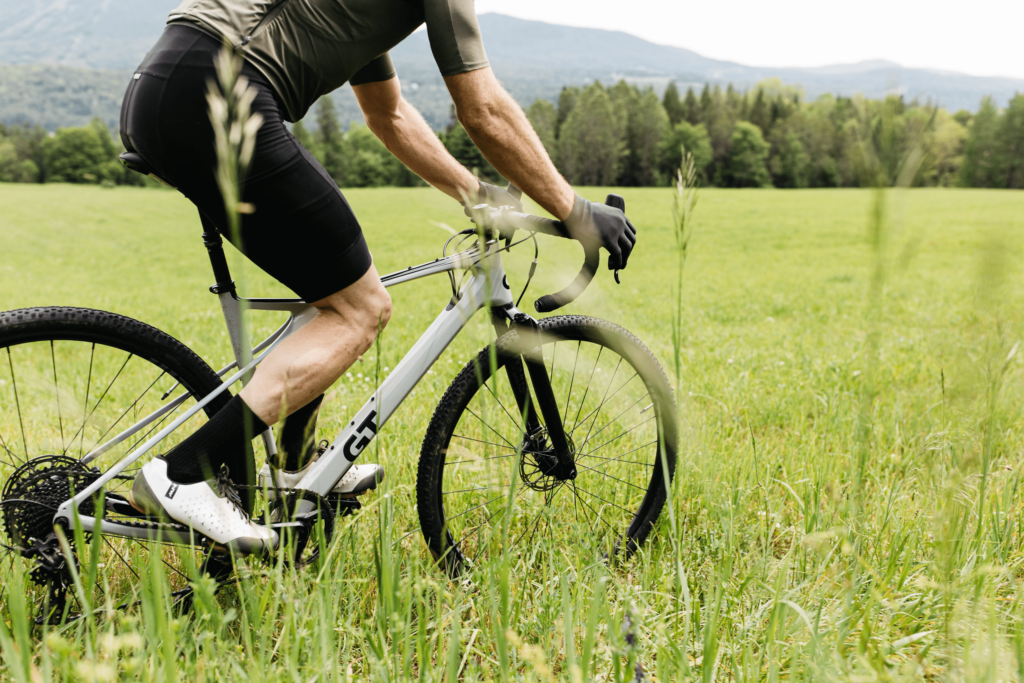
- Aerodynamic riding: Hybrid bikes will have flat handlebars rather than drop bar handlebars as on a gravel bike. Whilst flat bars offer control, there’s less positioning to optimise for speed.
- Terrain ability: Gravel bikes are specifically designed with more aggressive tyre tread and more robust frames, allowing you more technical terrain abilities than you’ll be able to on a hybrid bike. Additionally, gravel bikes often have a wider range of gears to handle steeper climbs and rougher terrain, whereas hybrid bikes have gears suited for city commuting and gentle trails.
- Comfort and control: Pitched as commuter and leisure bikes, Hybrid bikes offer similar prioritisation of comfort and control. However, with the many additional design features of a gravel bike that optimise it for light technical terrain, distance and speed, they are by no means the same. You will want to take this into consideration when choosing between a gravel and hybrid bike.
Gravel Bikes Compared To Other Bikes: In Summary
| Feature | Gravel Bike | Road Bike | Mountain Bike | Hybrid Bike |
| Best Use | Versatile: excels on mixed terrains, including gravel, dirt, and paved roads | Optimised for speed on paved roads | Designed for off-road trails, from forest paths to technical mountain descents | Ideal for urban commuting and light off-road riding; versatile and designed for comfort on various surfaces |
| Frame | Lightweight, durable | Lightweight, aerodynamic | Strong, durable | Versatile |
| Tyres | Wide, semi-knobby tyre tread for versatility on-road and light off-road | Narrow, smooth with minimal tread for low rolling resistance | Wide, aggressive knobbly tread for grip on rough terrains | Medium width, semi-knobbly for traction on-road and light off-road |
| Tyre Width | 35mm to 45mm+, designed for mixed terrain | 23mm to 32mm, optimised for paved surfaces | 2.1 inches (53mm) to 2.8 inches (71mm) or wider, for off-road traction | 28mm to 42mm, balancing speed, stability, and comfort |
| Gearset | Wide range of gears for versatility to handle steep inclines and fast flats | High gears for speed and efficiency on flat or rolling terrain | Low gears for steep climbing and rough terrain | Balanced gearing for versatility in commuting and light off-road |
| Suspension | None but may have minimal suspension or vibration-damping features | None | Front and (sometimes) rear suspension | Front suspension (sometimes) |
| Riding Position | Relaxed, versatile positioning for comfortable control | Aggressive and leaned forward for efficiency and aerodynamics | Upright, with a focus on control and manoeuvrability | Upright, with a focus on comfort and visibility |
Gravel Bike Frequently Asked Questions
What is the purpose of a gravel bike?
A gravel bike is designed to be the ultimate all-rounder, allowing cyclists to traverse a wide range of terrains from paved roads to gravel paths and light trails. This versatility makes it an ideal choice for riders looking for a single bike that can handle almost any adventure.
Can I go mountain biking with a gravel bike?
While gravel bikes can handle a variety of terrains and light trails, they are not specifically designed for the more challenging riding that mountain biking entails. On more aggressive and rugged mountain trails, your body certainly won’t thank you and you equally risk injury. You’d be better off choosing a mountain bike.
Why choose a gravel bike over a mountain bike?
Gravel bikes offer greater versatility and efficiency on mixed light terrains, including paved roads, making them a better choice for riders who aren’t attempting to ride mild to rough trails. They are also generally lighter and faster on flat surfaces than mountain bikes.
Why are gravel bikes heavier than road bikes?
The additional weight of a gravel bike comes from its sturdier construction, wider tyres, and sometimes additional features like disc brakes, all of which are necessary for the demands of gravel and mixed-terrain riding. As the designed purpose of the gravel bike is not typically racing speed, weight and speed are not as great considerations as in road cycling. However, with so many variables impacting weight such as frame material and components, that is not to say that a gravel bike could not weigh less than a road bike. It depends on your intended use of the bike.
Can you use a gravel bike for commuting?
Absolutely! Gravel bikes make great commuter bikes – It’s what I do with mine when I’m not hurling it through the dirt tracks at the weekend! Gravel bikes are versatile and can handle a variety of terrains, including city streets, park lanes, and gravel tracks making them a great option for commuting. Their wider tyres and comfortable geometry provide stability and a smooth ride, whether you’re on paved roads or rougher paths. Additionally, many gravel bikes offer luggage options, such as mounting points for racks and panniers, which make carrying your belongings easier and more convenient for daily commutes.
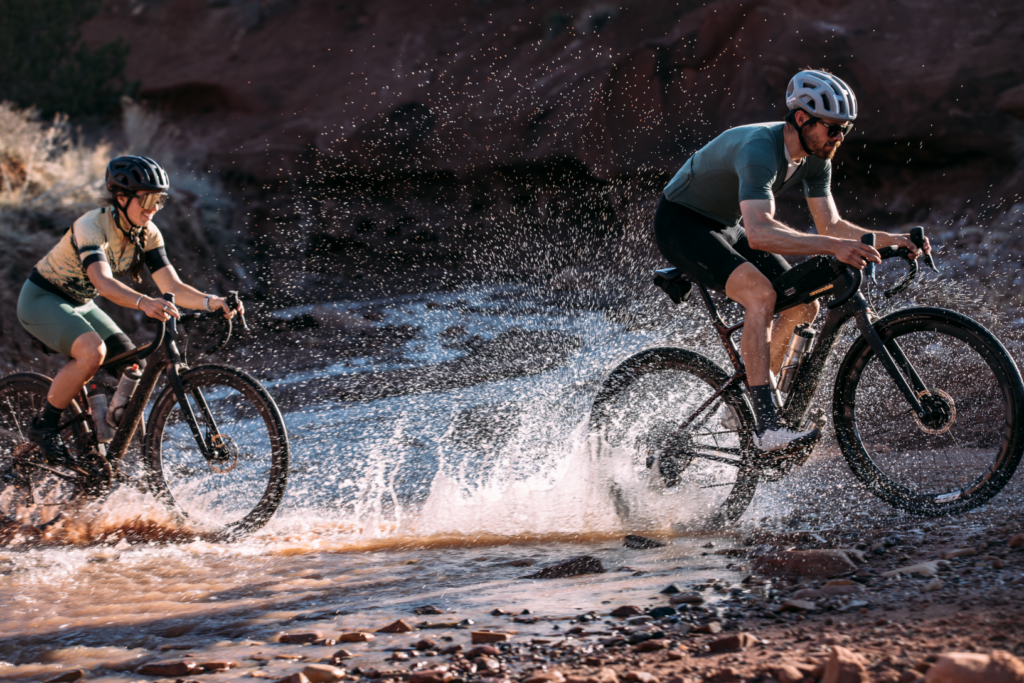
How Paul’s Can Help You on Your Gravel Bike Journey
As an avid gravel rider, I know there’s so much you can do with a gravel bike, and that’s why its popularity has skyrocketed in recent years. Gravel bikes are incredibly versatile, making them ideal for riders who enjoy a mix of terrains.
However, there will always be a place for a dedicated road bike if you ride purely on the road. Road bikes offer greater efficiency and speed on tarmac, which is perfect for those looking to compete or simply enjoy the thrill of fast-paced riding. For the recreational rider, a gravel bike can do so much and, unless you’re chasing top speed, they roll along at nearly the same speed as road bikes. Mountain bikes have their place too, excelling on challenging off-road trails and technical descents. Each category of bike comfortably fits a specific need without being overkill.
As technology evolves and gravel riding continues to grow in popularity, I think we’ll see the next generation of gravel bikes with even more tyre clearance. Some pros are already squeezing nearly 50mm tyres into their bikes. Mixed tyre sizes are also becoming popular among the pros, with larger front tyres or even MTB front tyres for extra comfort and a normal rear tyre for speed. But that’s just me nerding out…
Whether you’re a seasoned rider or new to gravel biking, at Paul’s Cycles we offer a wide range of gravel bikes from leading brands to suit your needs and budget. Our expert team can help you explore options and find the perfect gravel bike for you. Explore our selection of gravel bikes and get out there!




